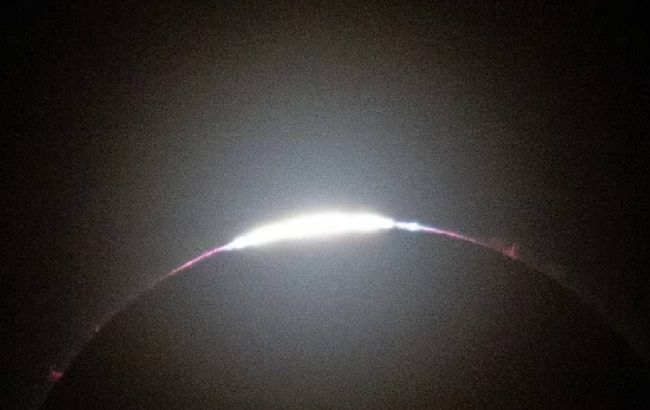2024 solar eclipse: NASA captured pink flares
 Pink flares were recorded on the Sun (photo: NASA/Keegan Barber)
Pink flares were recorded on the Sun (photo: NASA/Keegan Barber)
NASA photographer Snapper Keegan Barber captured stunning shots during the solar eclipse that occurred on April 8th. The photos showcase pink flames bursting from behind the sun's "corona," Daily Mail informs.
What are these solar flares
These pink flames the size of our planet are called solar prominences - loops of anchored plasma or superheated, electrically charged gas that can linger on the Sun's surface for months.
Both the outer dim layers of the Sun, the chromosphere and the corona, where these solar prominences flow, are usually overwhelmed by the full power of the Sun's brightness, but during eclipses, they were visible to both professional astronomers and amateur astronomers.
Barber managed to take several high-resolution images of solar prominences. It is noted that even observers from Earth could see these pink flashes with the naked eye.

Pink solar flares during an eclipse (photo: NASA/Keegan Barber)

Pink solar flares during an eclipse (photo: NASA/Keegan Barber)
Why are these flares pink-red
The pink-red hue of the solar prominence is a result of the transformation of solar gaseous hydrogen into plasma, as elemental hydrogen emits reddish light when heated to high temperatures.
It's long been known that heating various chemical elements produces specific colors. This scientific fact is even utilized in the fireworks industry.
Throughout the first day, the solar prominence begins to resemble a smaller loop closer to the Sun's surface, expanding or unfurling like a loose thread on a sweater, extending further into the upper layers of the Sun's atmosphere.

Prominences on the Sun (photo: NASA/DSO)
A giant nuclear fusion reaction, bound in space by its own gravitational force, the Sun is primarily composed of plasma, which is an electrified gas of electrons and ions.
The electrified flow of this plasma, according to astronomers, is what leads to powerful eruptions, occasionally ejected from the sun.
When magnetic loops are released into space, huge streams of plasma rush in to fill them, resulting in prominences that can last for weeks or months.
It is also noted that during the eclipse, the Sun was close to its maximum activity.

